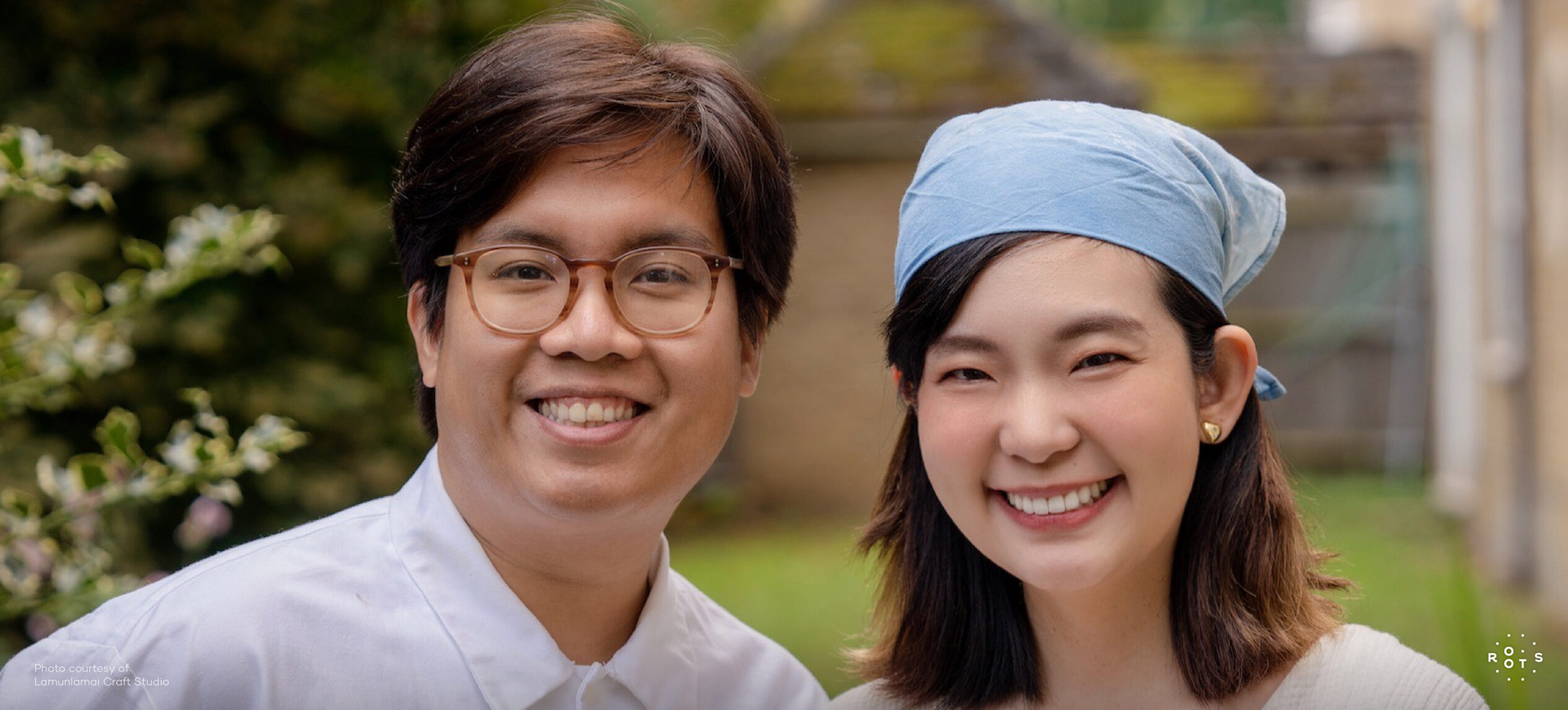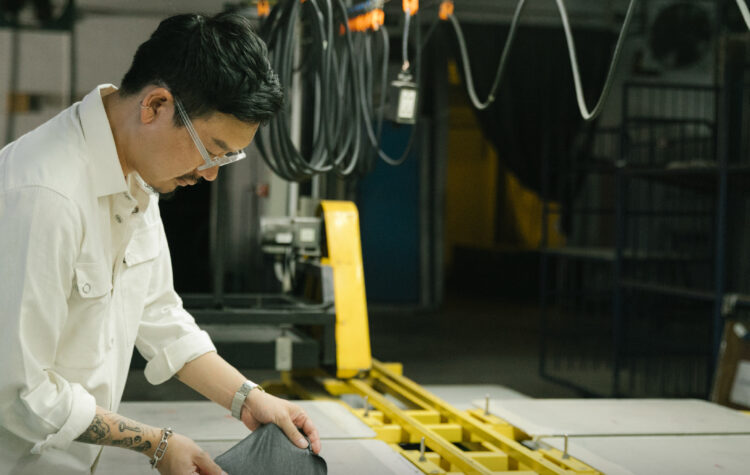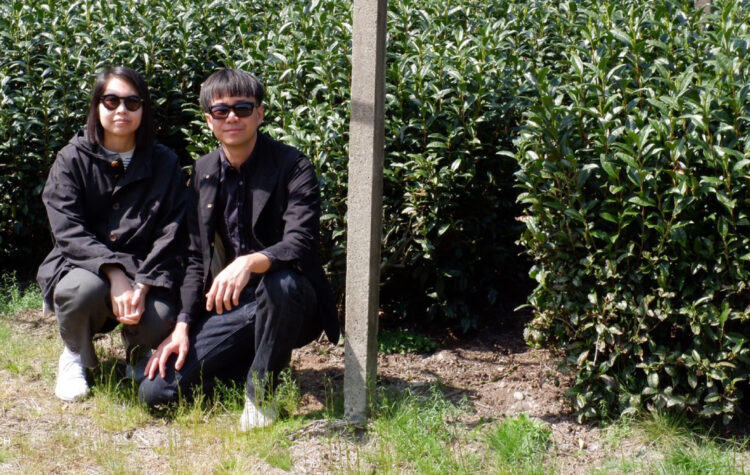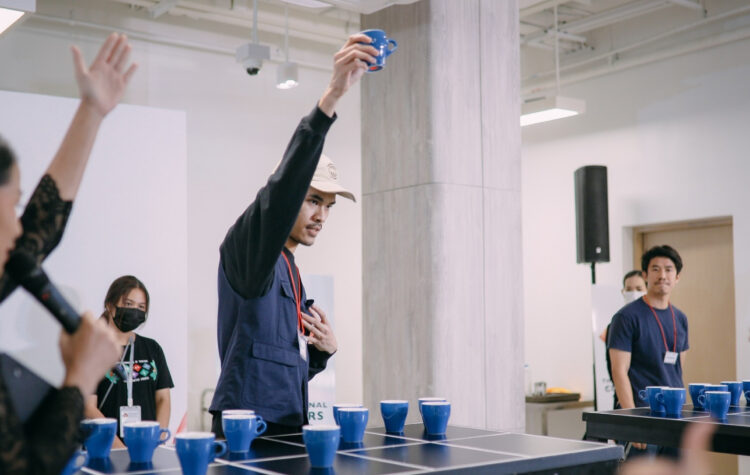Creating ceramic pieces requires mixing clay, molding, and firing, which can add non-biodegradable objects to the world. That’s why Lamunlamai, a ceramic studio founded by Mai (Nopkamon Akarapongpaisan) and Nam (Nol Netprom), prioritizes every detail of the crafting process to create art that is both aesthetically beautiful and practical, ensuring that each piece can be enjoyed for many years to come.
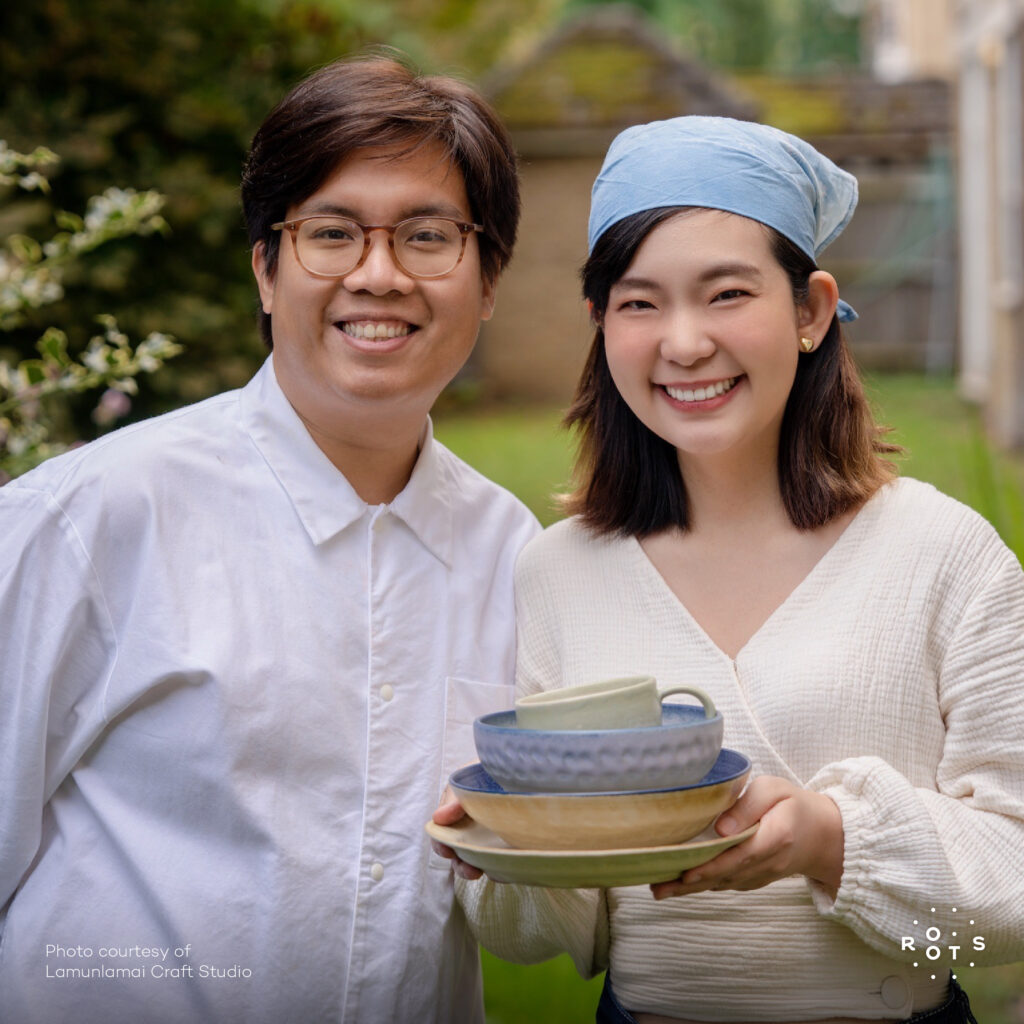
Whether it’s tableware, home decor under the Lamunlamai brand, or containers designed for fine dining restaurants, cafes, and other renowned places, Lamunlamai’s products are designed with sustainability in mind at every step of the production process. The Roots team is particularly impressed by the couple’s fun and creative use of food waste from collaborating chefs. They experiment with mixing food waste with clay to create ceramic containers that are actually used to serve food to customers.
Now, Roots customers no longer have to travel far to experience the stunning ceramics of the Lamunlamai team! Roots has collaborated with Lamunlamai to create coffee cups under the Roots Goodies collection, which are now available for purchase. The Roots barista team is super excited, as this is the first time they have been able to send coffee grounds, which are food waste from the storefront, to ceramic artisans to create beautiful coffee cups.
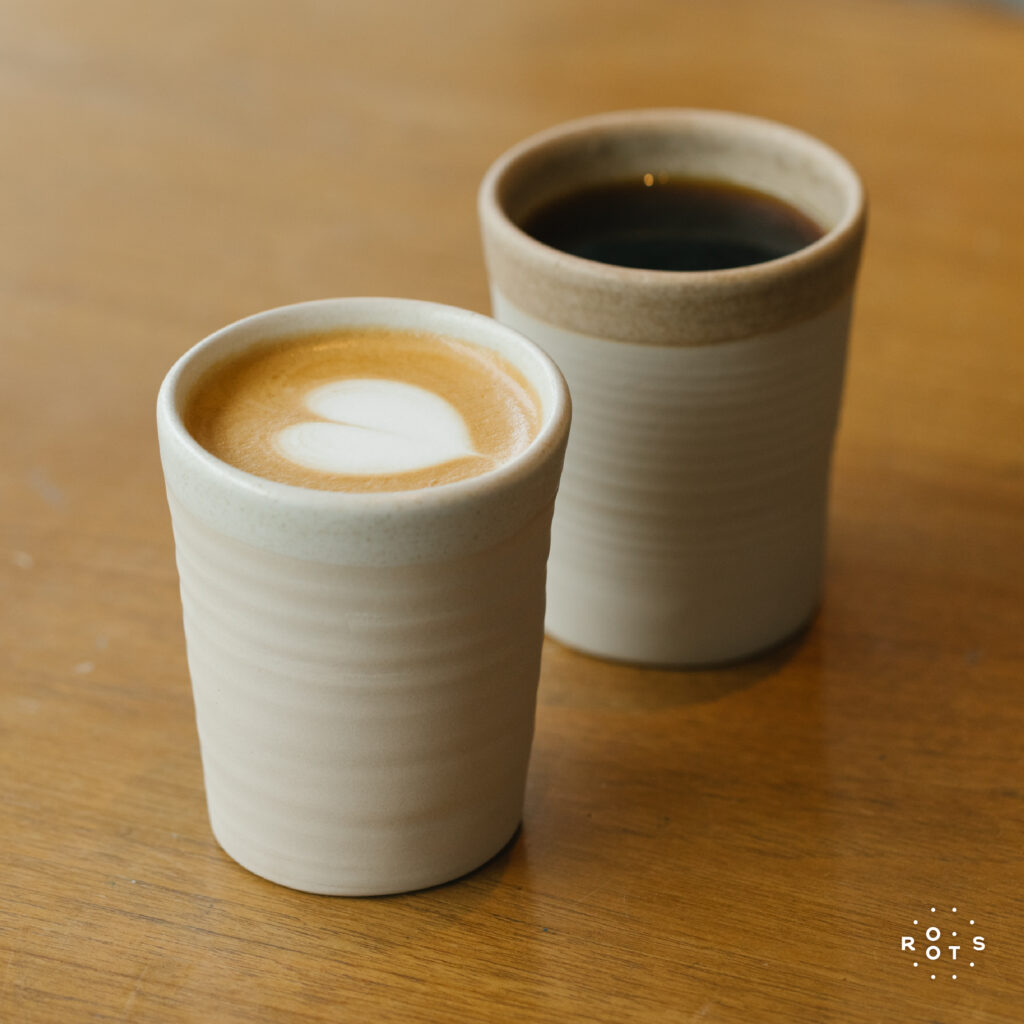
While this Everyday Essential product is on its way to your doorstep, let’s sit down with Mai, one of the brand’s founding designers, to learn more about Lamunlamai and her intentions for the ceramic brand, which is now celebrating its 10th year!
CHALLENGES FOR CERAMIC DESIGNERS, PAST AND PRESENT
Mai and Nam founded Lamunlamai while they were still in university. They saw a gap in the ceramics market for studios or teams making handmade ceramics that could be designed and produced to order, even in small quantities, without a minimum order requirement of hundreds or thousands of pieces. This was especially beneficial for small restaurants, which did not need to buy or stock up on more utensils than required.
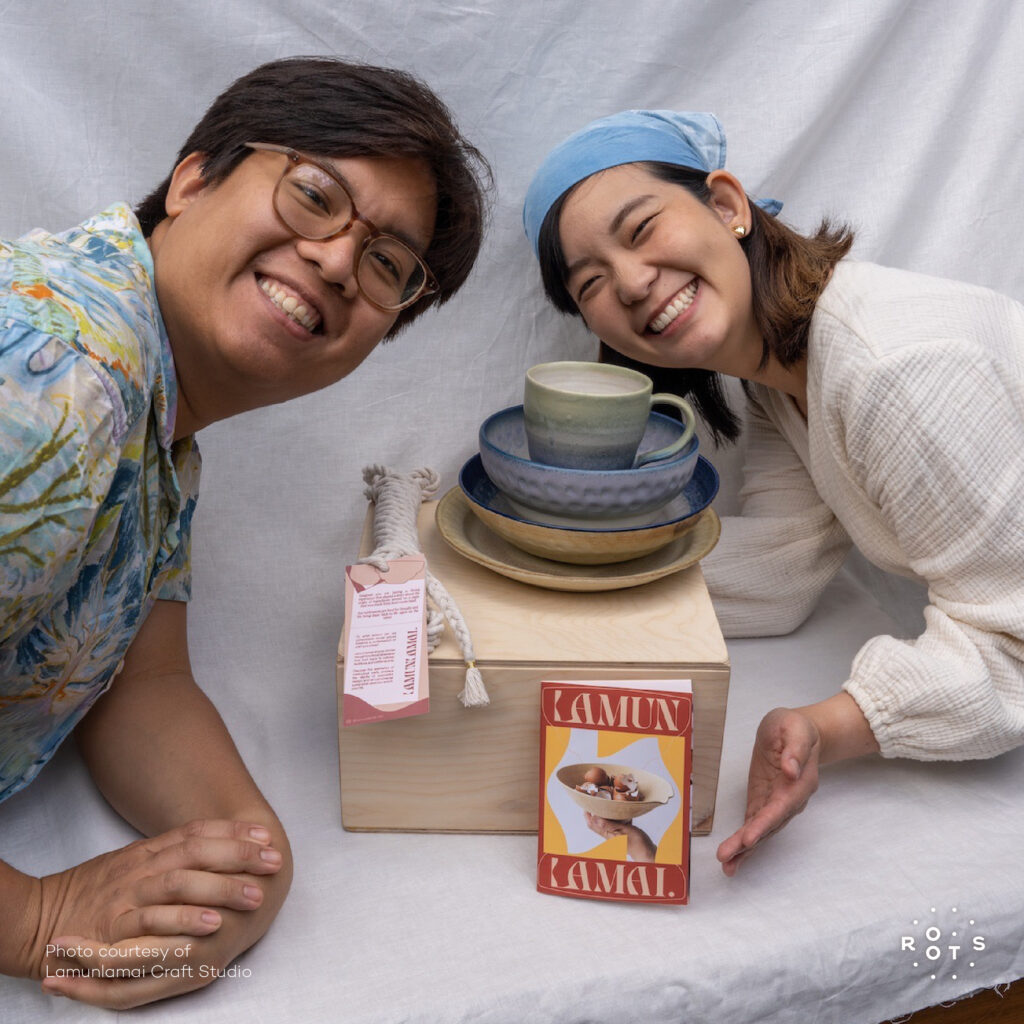
“Right now, we’re focused on creating new value for our brand, and that means moving towards sustainability,” Mai says.
“We believe that sustainability is about three things: People, Planet, and Profit. In our business, we need to make a profit to create jobs and keep the lights on, but we also want to impact the people and the planet positively. So how can we do both?
Since we started making ceramics, we have always had this question. Our natural materials are finite, and we can’t create new natural materials to replace them. This means that every piece of ceramic we produce is a consumption of nature. Our challenge today is building in a way that has the least waste, is safe, and is most beneficial to the people and planet.”
SOIL AND FOOD WASTE TRANSFORMED INTO DELICATE CERAMICS
Ceramic coffee cups made with coffee grounds may be a new idea for many people, but the Lamunlamai team has been working on it for some time. They experimented with many different formulas and ingredients to create tableware products using food waste mixed with clay or glaze.
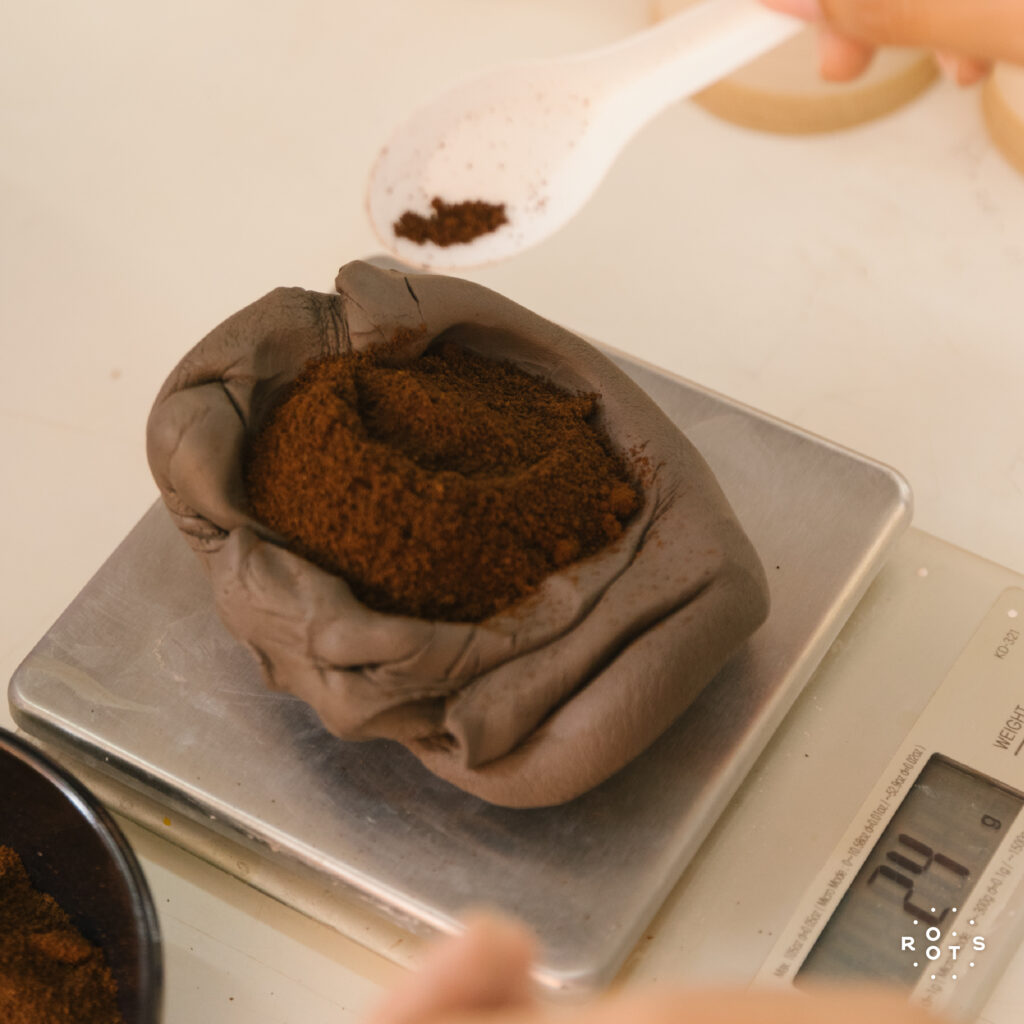
“At first, we didn’t know that food waste could be used to make ceramics,” Mai explains. “But when we started working with restaurants, we noticed that they all care about the source of their ingredients. This led us to think about our own supply chain. If we’re producing ceramics for restaurants that care about the source of their ingredients, we need to make sure that our materials and processes are sustainable, too.”
Food is an organic material, so it can be buried and decomposed and used as fertilizer. However, Mai and Nam believe that it would be better if they could reduce the process of burying food waste, reducing the resources, labor, and time it takes to decompose. “So, that’s why Nam and I tried to experiment with whether some food waste could be used in ceramic making,” Mai says.
Mai and Nam had to study to understand the different materials that make up ceramics. They researched what minerals are in each type of food waste, their properties, and whether they can be used to replace traditional ceramic ingredients.
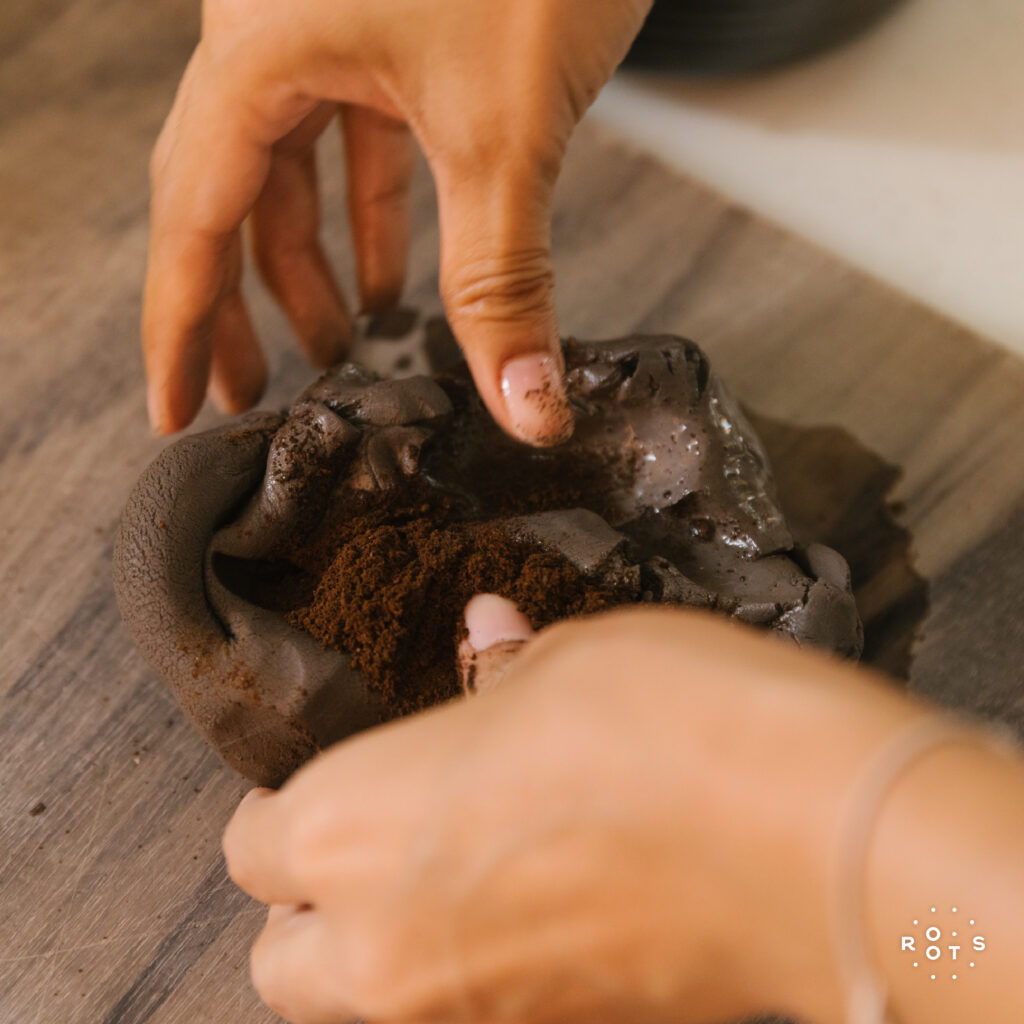
“We found that eggshells, shells, and other shells contain calcium carbonate, a mineral used in ceramic glazes,” Mai says. “This is a good place to start using food waste in ceramic making. Instead of mining for minerals, we can use eggshells. We just needed to experiment with the right ratio of eggshells to clay to make sure that the products still have the same properties after firing or even have better characteristics.”
“We also discovered that someone had previously used coffee grounds mixed with clay to make flower pots,” Mai continues. “The good thing about this was that it could absorb water, but it is not considered ceramics yet because it needs to be fired. So, we also decided to use coffee grounds to make ceramic food containers. Replacing some of the clay with coffee grounds would make the cup lighter, but the water absorption properties would remain. We solve this problem by coating the surface to seal it, so food or drinks will not seep into the ceramic.”
BEAUTIFUL DETAILS BEHIND THE ROOTS EVERYDAY GOODIES COFFEE CUP
For the Roots team, Mai and Nam are the ones who showed us that coffee grounds from the store can be recycled into reusable containers. Achieving this was challenging, but this ceramic duo worked hard to get the final result, which is impressive!
“Once we had a stable ratio of coffee grounds to clay, we had to test the shape and form of the cups,” Mai explains. “We wanted to make sure they were practical, comfortable to hold, and the right size for Roots customers. We also wanted to make sure they were compatible with the coffee recipes that Roots baristas brew in-store.”
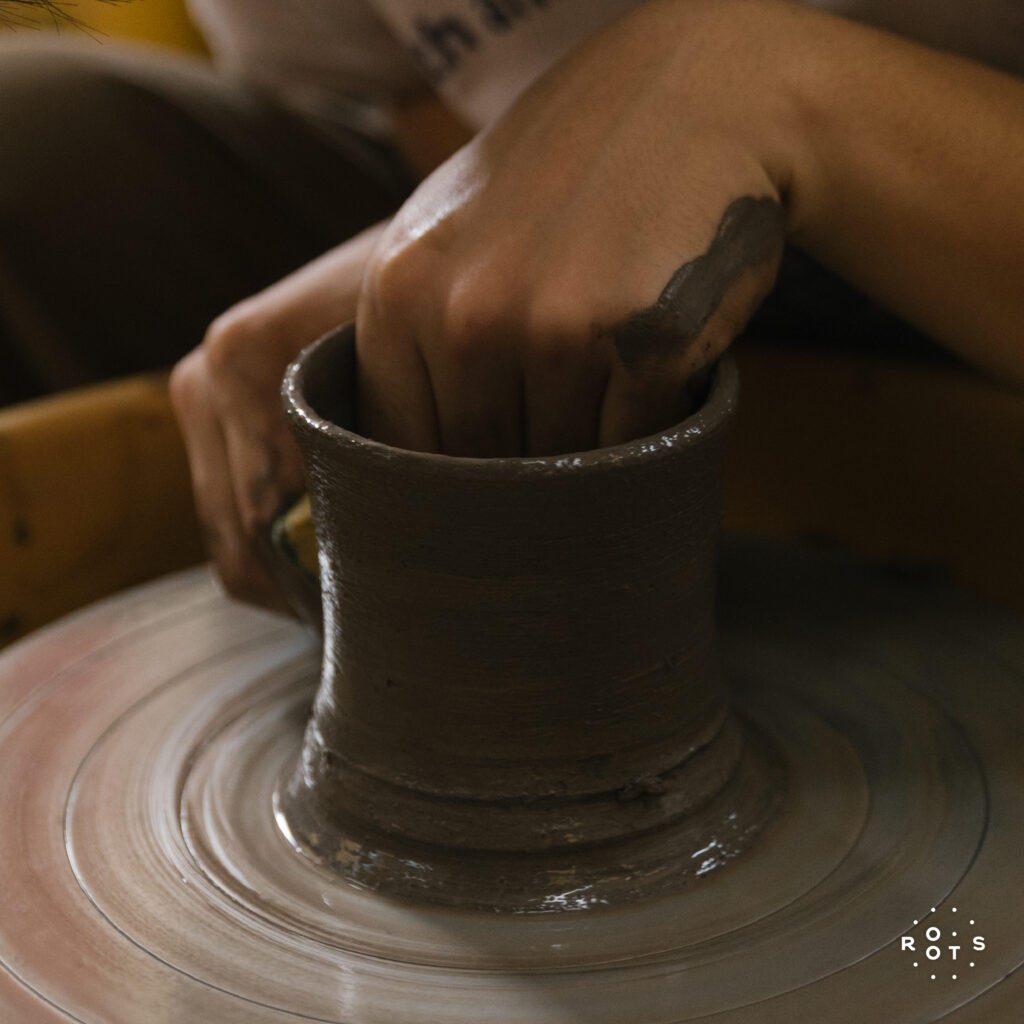
All of the Roots Goodies coffee cups are handmade on a potter’s wheel. The unique fingerprint pattern on each cup is a maker’s mark, a testament to the skill and care of the potter. Once the cups are formed, they are dried to a bone-dry state and then fired in a kiln at 800 degrees Celsius. This is called the biscuit stage, which is ready for glazing or painting.
The glaze on the ceramic is unique and special! Mai told us that the studio uses a proprietary color formula developed by Nam, who is an expert in color theory and natural mineral pigments. Some formulas even include eggshells or seashells.
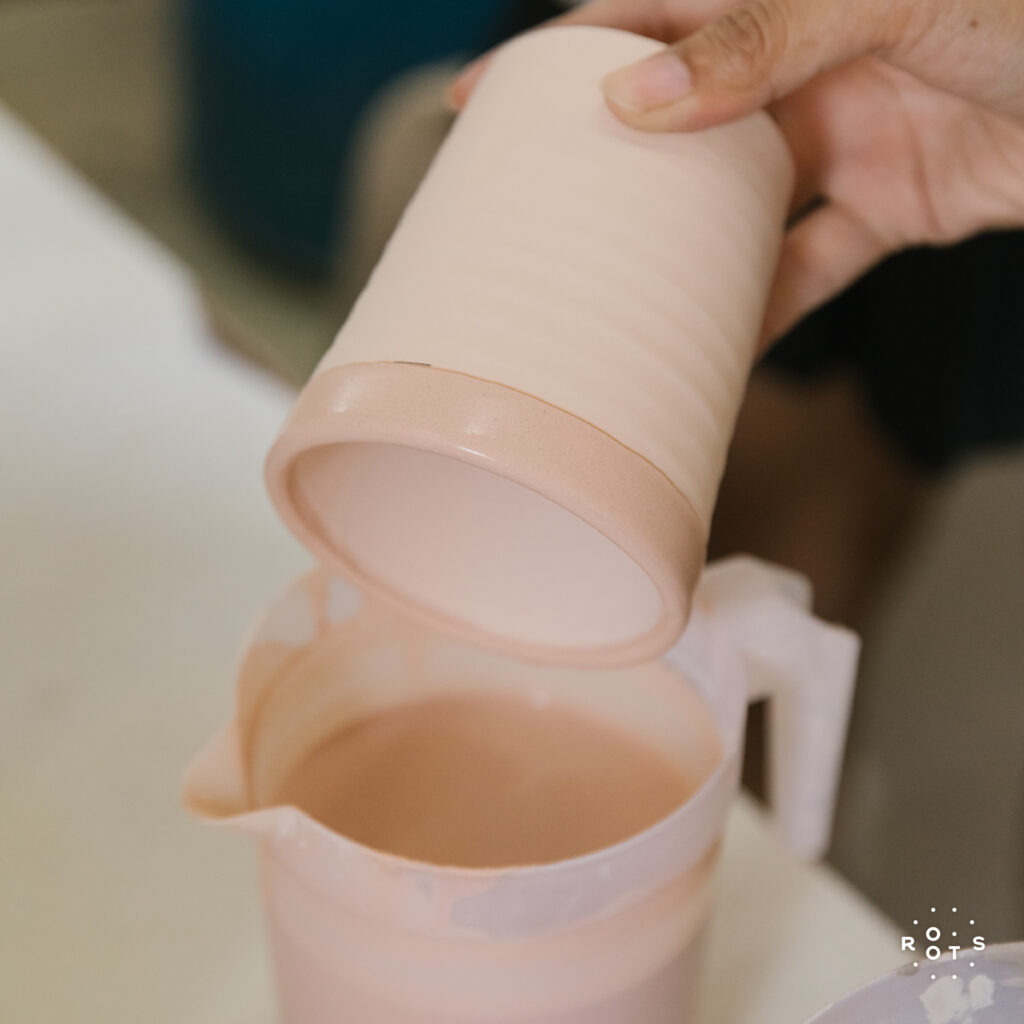
“Everything comes from nature, so even minerals with the same name can have different properties, such as fire resistance and strength,” Mai says. “When we mix colors, we do it in large batches and dip all the cups at once to ensure the colors are as consistent as possible. Glazing is also done by hand for each cup. After glazing, the cups are fired in a kiln at 1,250 degrees Celsius, almost the highest possible temperature. The higher the firing temperature, the more confident we are that our ceramics can withstand high temperatures and be used to hold hot food or cook in the oven or microwave.”
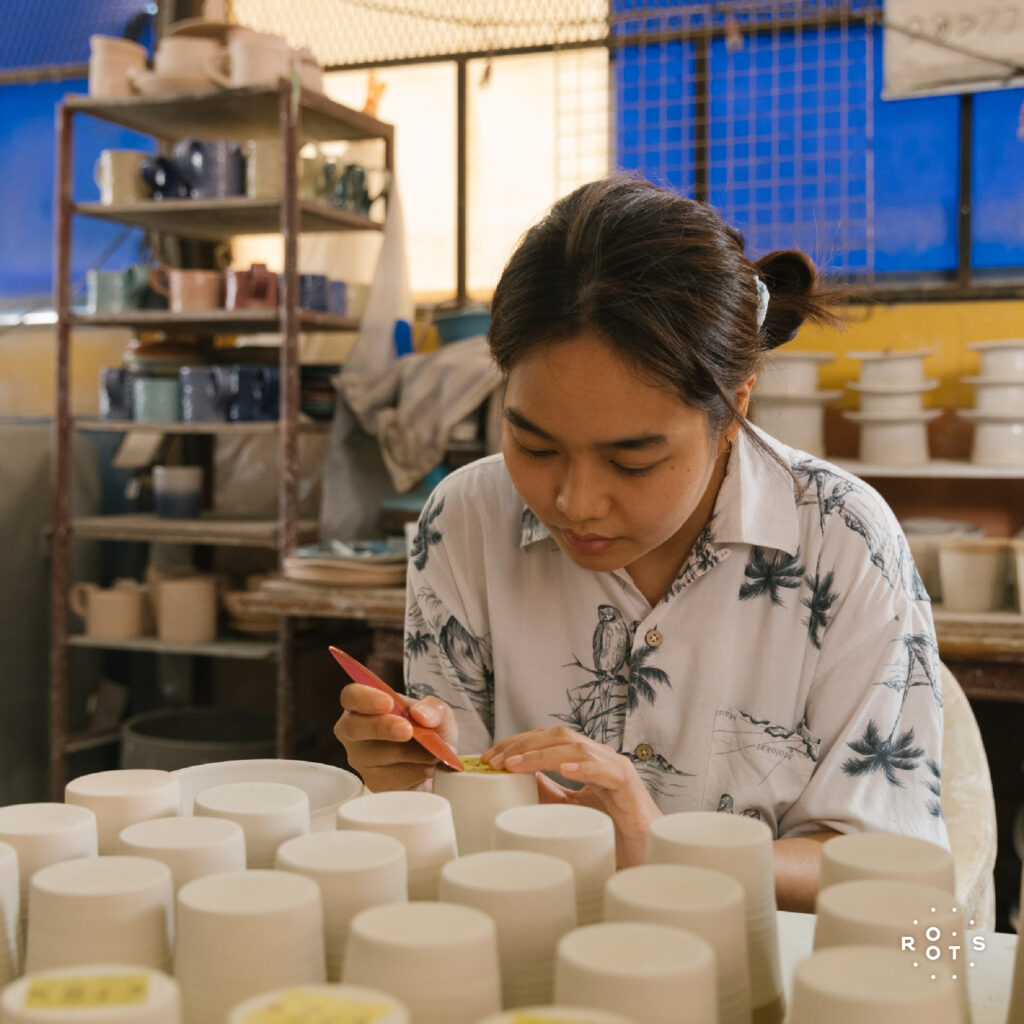
Roots ceramic cups go through an extra firing round to make the logo on the cup (which is applied with a decal, like a sticker, similar to screen printing) more durable.
CERAMICS THAT MAKE A DIFFERENCE TO THOSE AROUND THEM
We asked Mai if she felt their efforts and devotion to experimenting and developing sustainable ceramic-making methods were worth it. She replied:
“Yes, it is definitely worth it because we feel like we’ve created an impact in the industry. We make products that customers like, which gives us revenue to support our work. We also use sustainable materials, which is important to us. We want to make sure we’re using natural resources in the best way possible and that we’re taking only a little out of the environment. We also want our products to be valuable to others in terms of their use and meaning.
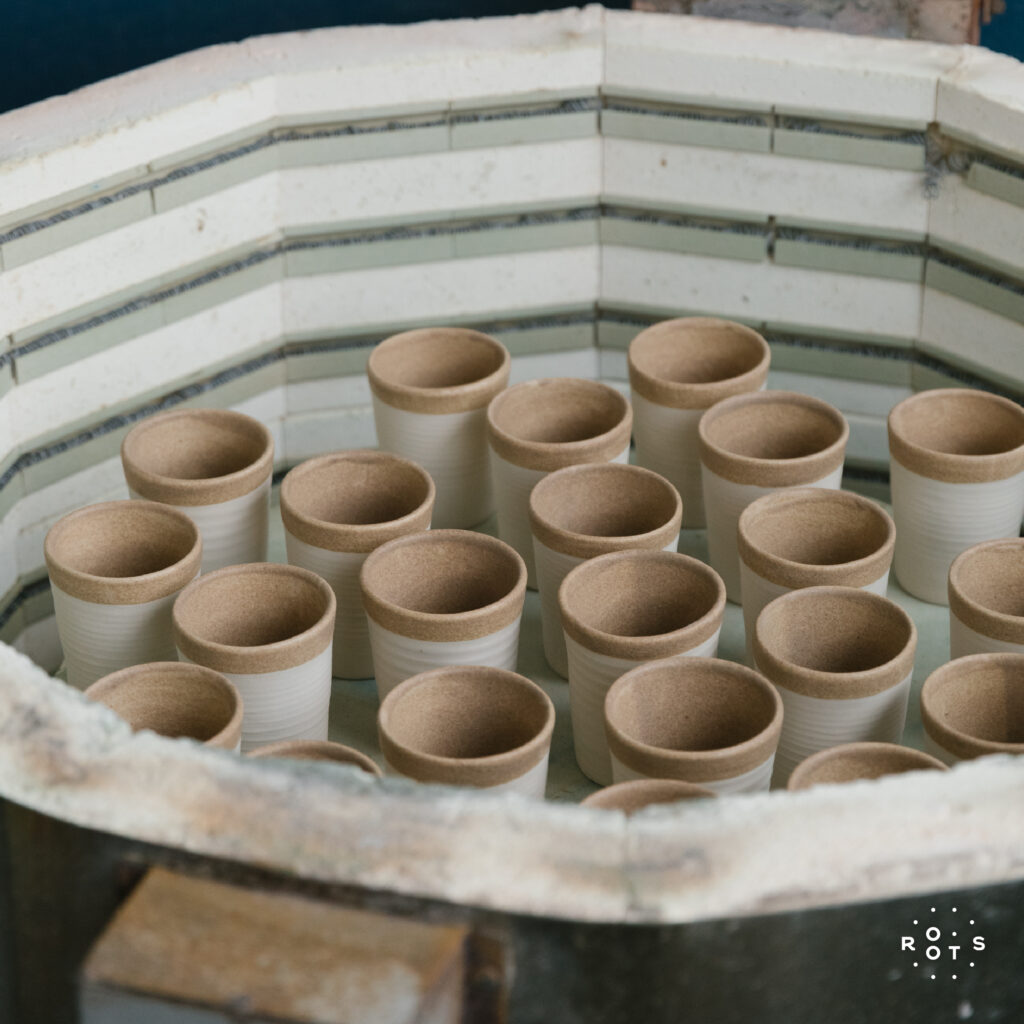
In terms of People, we are working to raise awareness about food waste among restaurant customers. They now know that their leftovers can be used to make new products. We also want to educate them about the global problem of food waste. Everyone has a role to play in reducing food waste, and we want to help people make more informed choices about their consumption.
As designers and business owners, we want to think about how our brand can have the biggest impact on society. We believe that businesses should positively impact the world, and we think that Roots is a good partner for us because they are also committed to promoting the Thai coffee industry.
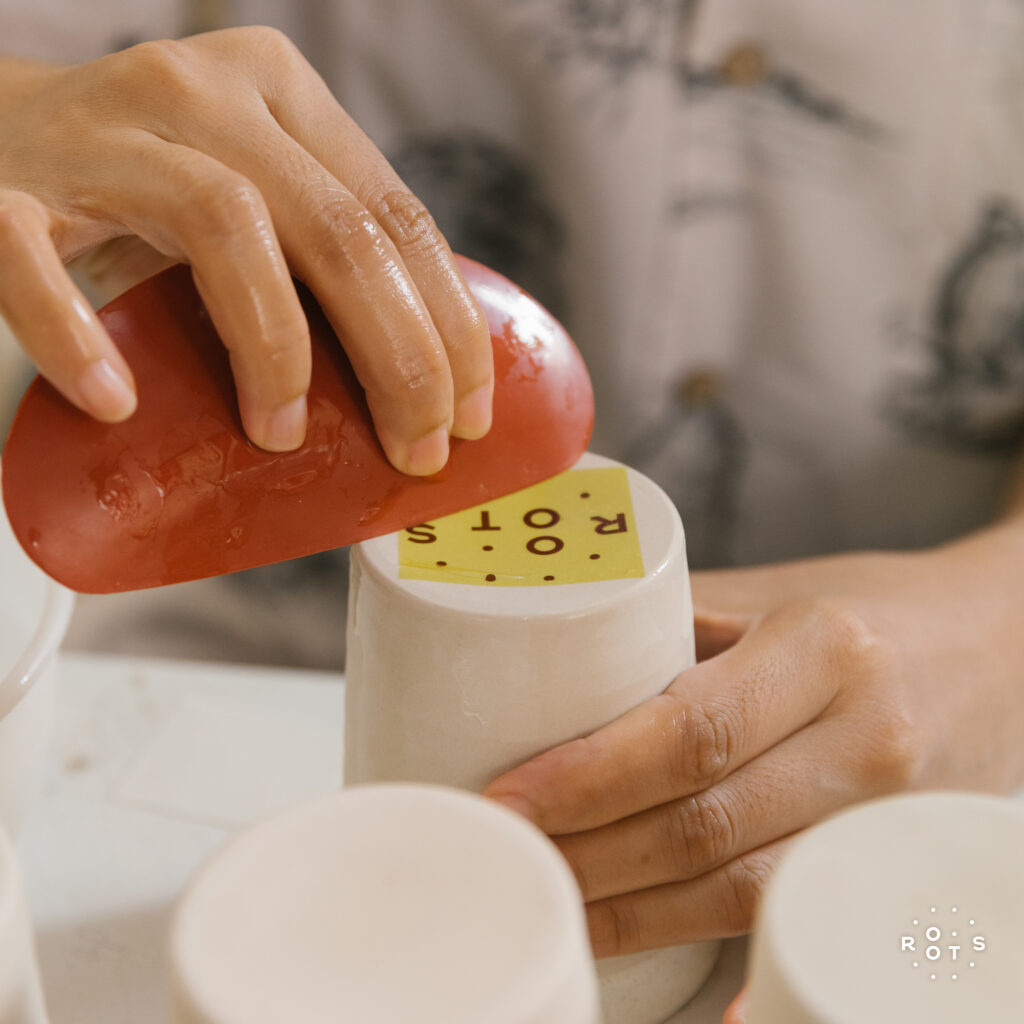
“I always feel comfortable and at home when I go to Roots to drink coffee. I think it’s great that Roots creates spaces where people can come and relax and enjoy their time. Lamunlamai’s cups want to help Roots customers enjoy their coffee even more, creating a positive atmosphere that will help everyone have a good day!” Mai concluded.





